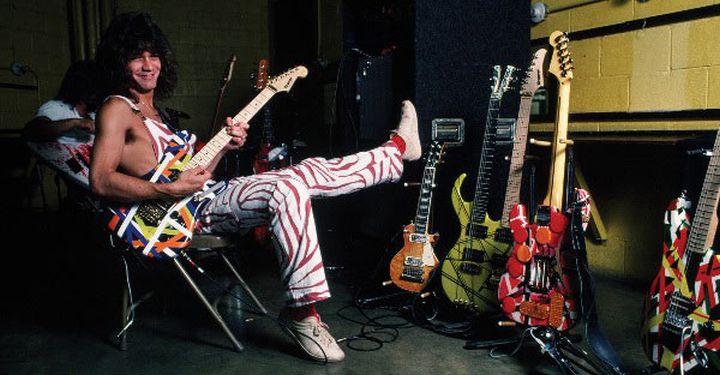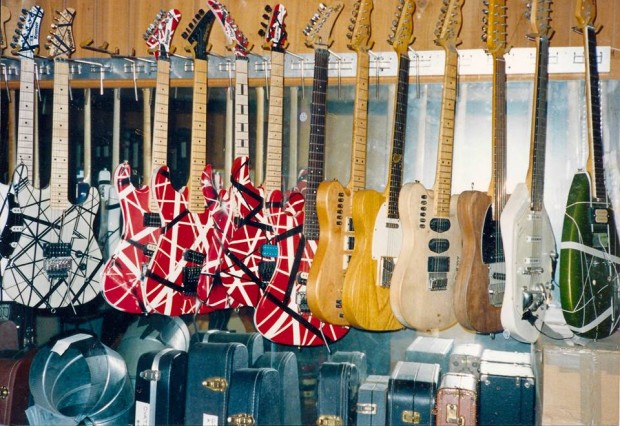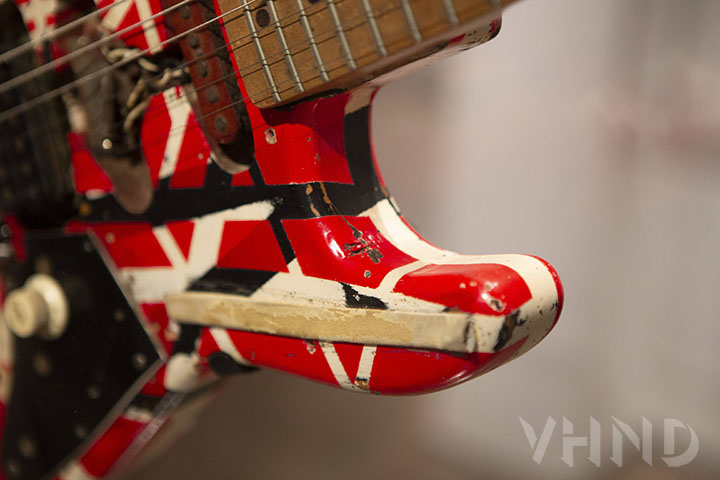
Guitar.com has posted a tribute to Eddie Van Halen and his endless pursuit of guitar perfection.
Writer Tony Bacon began by honoring Eddie’s dedication to the instrument he loved. That dedication would go on to influence an entire generation of musicians, industry insiders and manufacturers:
“Eddie Van Halen didn’t just amaze his fellow guitarists with the remarkable work he did using a rare combination of playing techniques. Ed’s attitude to his guitars and his amplification also influenced a multitude of musicians, instrument makers, and amp builders.
‘I hate store-bought, off-the-rack guitars,” he told Jas Obrecht at Guitar Player back in the late 70s, a few months after the first Van Halen album appeared. “They don’t do what I want them to do.’ This summed up the approach Ed took to more or less all the gear he used during the years of his growing success.
He’d started out on a cheap Teisco electric, and some of his mates in early pre-VH bands considered that a Strat he moved to sounded too thin and a 335 looked too un-rock. So he decided to take matters into his own hands and combine some of the qualities of Fender and Gibson into one home-assembled instrument. Enter Frankenstrat, Ed’s generic name for several lashed-up guitars that he put together from assorted parts.”

Bacon went on to write of Eddie’s legendary Frankenstrat guitar:
“As with many things Ed, the stories have varied through the years, but it seems likely that the first Frankenstrat, the one with the black-and-white finish seen on the front of that first Van Halen album cover, consisted of a Strat-style body and neck he got from Charvel, in turn supplied to Charvel by Boogie Bodies. He took the PAF humbucker from his 335 and fitted that to the body, slanted at the bridge. He glued in some jumbo Gibson frets, and he screwed on his Strat’s vibrato
and fitted a single control for volume.
Then there was that distinctive black-and-white finish, which Ed achieved using acrylic bicycle paints, spraying on a white base, sticking down apparently random strips of masking tape–spraying black over everything, removing the masking tape, and revealing a fancy striped effect. A later reworking resulted in a red, black, and white look.
The Frankenstrat served him well. In 2011, when Ed donated Frankenstrat 2 to the Smithsonian National Museum of American History, he told the museum’s magazine what became of Frankenstrat 1. ‘I retired it from regular use,” he said. ‘It took so much abuse from endless touring and recording–I wanted to pay some respect to it and let it survive and not let it get destroyed completely. At the same time it became something so well-known beyond my wildest dreams that its value made it a target for theft, and I wanted to protect it. I still play it every now and then. It’s priceless to me.’

The next step in the story of Ed’s individually styled guitars came with an endorsement deal that he made with Kramer in 1983. His tie-up would help propel Kramer to become the biggest-selling electric guitar brand in the States during the mid 80s–although in its original form, the company would burn out and barely survive into the following decade.
As well as the production models that he promoted, Ed’s most famous Kramer was a new take on the Frankenstrat, usually called the 5150 thanks to some taped numbers on its body (and named to match Ed’s 5150 recording studio). The guitar centred on a Kramer Pacer Special body and a custom maple neck with hockey-stick head, like the one on a modified Ibanez Destroyer that Ed owned. It had the familiar set of relatively straightforward appointments: single bridge humbucker (straight rather than angled this time), single volume control, Ed’s now favoured Floyd Rose vibrato system, and of course a red, white, and black striped finish.
Ed’s do-it-yourself attitude was hardly new, and players had chopped and changed guitars to suit their requirements for years. But his choices paralleled a growing affection among some makers for mixing Fender and Gibson attributes, and also the rise of the ‘SuperStrat’ — the extreme rocker’s tool of choice that was developed through the 80s thanks not only to Kramer but also to makers such as Electra/Westone, Jackson, Ibanez, and more.”
You can read the entire article, which also includes segments devoted to Eddie’s legendary “Brown Sound” and his signature model of EVH guitars named after his son Wolfgang HERE.
Eddie Talks About His EVH “Wolfgang” Guitar with CNN (2009):